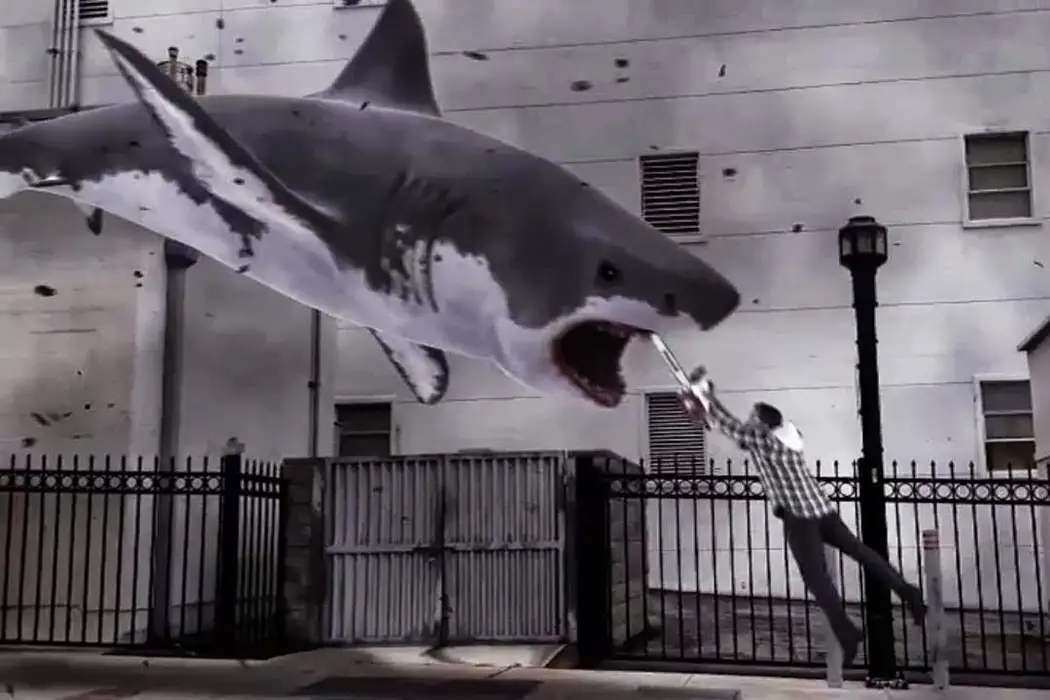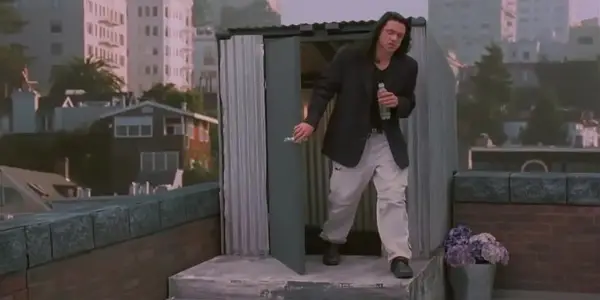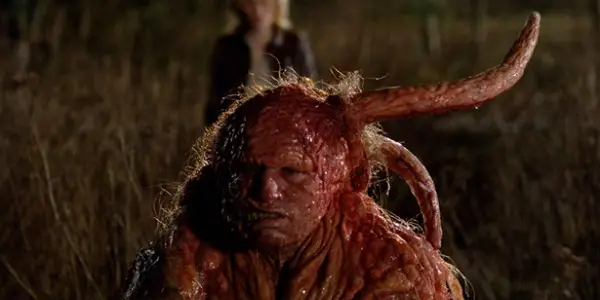Trash Film: Why We Enjoy Unrealistic Realism

Rachael Sampson is a Northern screenwriter and critic based in…
Film is an incredible medium; it has the power and duty to reconfigure perceptions, educate society and bring joy, sadness, suspense and wonder into the lives of its audience. Now in the 21st century, film has found even more ways of fulfilling these responsibilities, and has the ability to leave huge impacts on its spectators, to such an extent that the content/message may reside within them throughout their lives. That is how someone can detect they have just watched a good film; when it gets into their bones and they cannot help but recite the lines, revisit the story multiple times, and talk/think/dream about it.
Everyone has a handful of movies they have experienced this with. Why then, can some of the most terrible movies ever made, also sit next to them on the throne? It does not make sense for films with rubbish plot-lines, dialogue, characters, and direction, et cetera, to also be granted this accolade. How can trash film, a genre literally dedicated to crap cinema, be a positive thing? How can something so bad, be so good?
“The Worst Film in the World”
The recent release of The Disaster Artist – a film about (arguably) the worst film ever made, has subsequently returned Tommy Wiseau’s infamous 2003 movie The Room to the limelight. The Room is a prime example of trash film. The best way to describe it is in the words of Tom Bissell (the author of the book The Disaster Artist): “It is like a movie made by an alien who has never seen a movie, but has had movies thoroughly explained to him.” The film is basically a live action version of the computer game Sims. The cast do not act like real people, but their unusual behaviours aren’t questioned by other characters.

In one scene, two of the characters randomly have a fight where one is hanging over the edge of a building, then seconds later, the two act as if it never happened. The storyline is nonsense, the dialogue barely makes sense and the actors might as well be in a GCSE student film. To those who haven’t seen it, The Room sounds absolutely terrible, but to those who have, they know that isn’t the case. This notoriously “bad” film has a cult following, and still holds monthly midnight screenings which are often sold out in multiple countries, 14 years after its release.
Paracinema
The Room fits into a class of film known as “paracinema”, a term used to define films that live outside the mainstream circle. Genres such as: art film, horror, pornography, government hygiene films, Elvis flicks, Japanese monster films and beach party musicals (alongside many other niche genres) all fit into the paracinema category. The Room belongs in the subcategory of trash film – films that are low budget and poorly produced. Why would anyone want to watch a movie that is labelled as trash?
According to various studies and reports, a taste for trash cinema is linked to people with higher levels of intelligence. Avid watchers of the genre say that what draws them to this style of film is its “transgressive nature” and “subversion of mainstream standards,” suggesting that its breaking of codes not just within the content, but the context of filmmaking itself, is refreshing to watch, somewhat rebellious, and definitely enigmatic.

The brain tries to figure out how the film has made it to the big screen, and in The Room’s case, ultimately fallen into mainstream cinema because of its unbelievable notoriety; in some instances the failure of the film’s objective turns comical, to such a degree that it becomes incredibly successful in the outer world. Audiences cannot help but love a serious attempt at filmmaking that falls flat on its face.
Camp Cinema
The ironic way many view trash film is related to the depiction of theatrical, over-the-top films which take themselves seriously. This concept is known as “camp.” Camp features are not only present in extremely “so bad they’re good” trash films such as Birdemic: Shock and Terror, Sharknado, Planet Terror, Piranha 3D, Troll and Slither, but they are also overtly common in some of the most iconic, mainstream movies. Romeo and Juliet (1996), The Rocky Horror Picture Show and Pirates of the Caribbean all include camp moments throughout their narratives. Some filmmakers utilise camp elements to create the perfect balance of unrealistic realism.
Consider Quentin Tarantino’s movies: Tarantino loves the theatrical and often makes his characters play characters within the story; a meta method which dates all the way back to the 16th century – prevalent in Shakespeare’s plays such as A Midsummer Night’s Dream and Hamlet. Look at Django in his flamboyant blue suit (Django Unchained), Mr. Orange in Reservoir Dogs, or the undercover “Italian” Inglourious Basterds trying to kill Nazi’s in the cinema.
They all masquerade as someone they are not; but with the audience’s knowledge of this disguise, it means the characters can play into their dramatic, over-the-top roles for maximum comedic effect. Tarantino pushes the actors/characters even further with their extravagant personifications, and it undoubtedly works, as the logic and reasoning behind the theatricality translates as coherent on screen.

Wes Anderson’s movies are probably the most iconic examples of camp cinema, as they include multiple moments of far-fetched, exaggerated comedy scattered throughout the narrative. Anderson uses just the right amount for the audience to remain invested in the realism before it turns too surreal/unrealistic. The Grand Budapest Hotel has a perfect balance of the impossible and the realistic, whereas The Life Aquatic of Steve Zissou resides slightly closer to the border.
Anderson’s perfectly symmetrical, pastel-coloured worlds combined with unnatural camera movements, cartoonish special effects and awkward conversation styles, break generic film conventions, and simultaneously present audiences with unorthodox quirks prevalent in trash film. Camp moments within a film can provide a long lasting impact on the audience, for they become infectiously re-watchable and incredibly entertaining. It is the exclusivity of its usage which determines a film’s quality.
Camp Dialogue
Screenwriters also utilise camp within their dialogue, one of the most iconic examples being in Napoleon Dynamite: “Napoleon, don’t be jealous that I’ve been chatting online with babes all day. Besides, we both know that I’m training to be a cage fighter.” Or in Juno: “That ain’t no Etch-a-Sketch. This is one doodle that can’t be un-did, home skillet.”
Both lines are not something people would hear on a daily basis; however, that is what makes them more iconic and comedic. These filmmakers know that less is more, and including a random line such as “I left a Mars Bar in the glove box and he chased me around the garden with a piece of wood” (Shaun of the Dead) once in a blue moon, has a stronger, more tasteful effect than if inconceivable dialogue was present throughout.
Trash Film: Conclusion
In summation, camp film is defined by a movie doing something ridiculous and over-the-top whilst being executed sincerely – something repeatedly implemented in the best films to date. This technique is central to the genre of trash film; arguably the “worst” genre of film that exists. The juxtaposition of such a brilliant method of storytelling and filmmaking being the definition of the worst cinematic genre is enigmatically paradoxical, and underlines the central reason as to why it is so popular.
Camp challenges binary thinking because it is both good and bad. It disrupts the most obvious principles of cinema, which ultimately permits trash film to achieve film’s primary purpose in being entertaining and enjoyable, and achieving this goal through subversive methods arguably makes it even more enjoyable. (Irrespective of if the audience are laughing along with the movie, or at it).
Just because a film reads as bad, doesn’t necessarily mean it isn’t good. The Room might be labelled as the worst film ever made, but is it bad? No. It brings audiences so much joy and pleasure through its unrealistic realism. It is the ultimate example of how something deemed so wrong can in fact, be so right.
Do you agree that The Room is so bad that it’s good? What are your guilty pleasure trash movies? Share your thoughts and comments!
Does content like this matter to you?
Become a Member and support film journalism. Unlock access to all of Film Inquiry`s great articles. Join a community of like-minded readers who are passionate about cinema - get access to our private members Network, give back to independent filmmakers, and more.
Rachael Sampson is a Northern screenwriter and critic based in London. Her latest film is currently in post production and she has 2 shorts cooking in the oven. Rachael is also a published short story author and theatre maker. She often finds herself daydreaming about Andrea Arnold's filmography and firmly believes that Inglourious Basterds is the greatest movie ever made.














